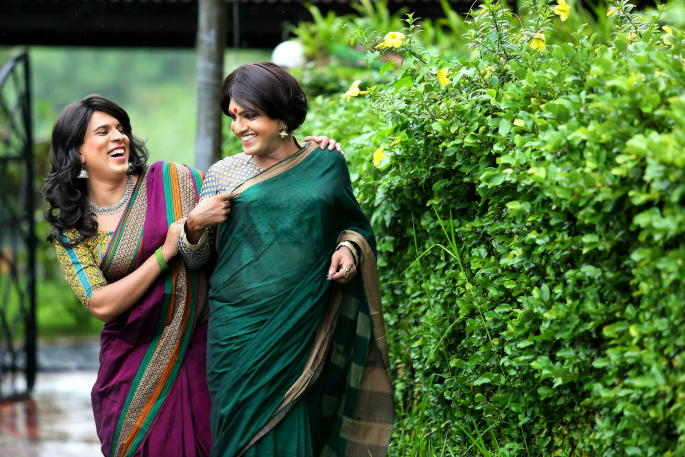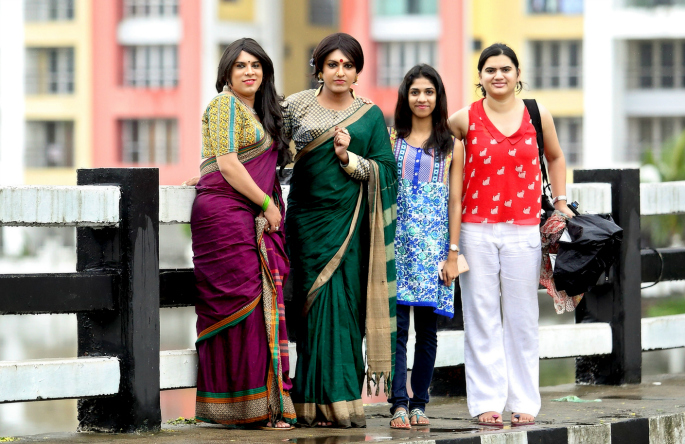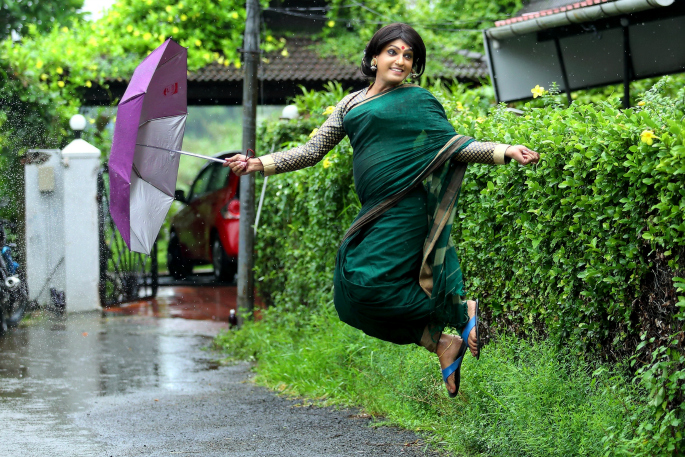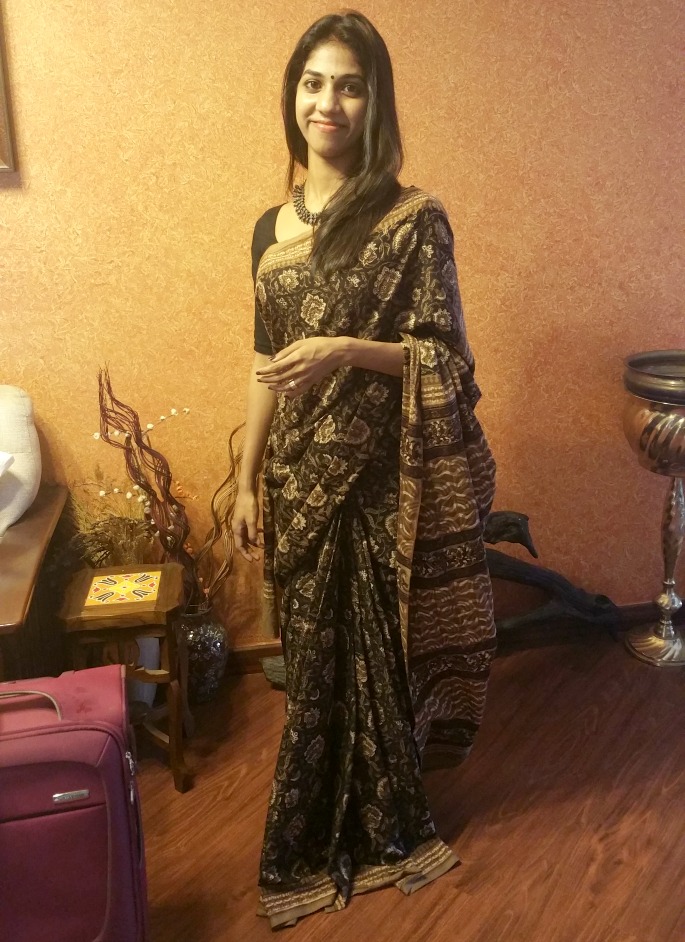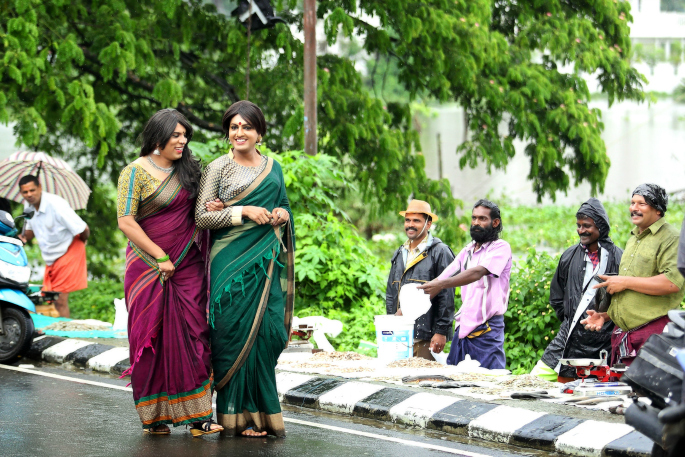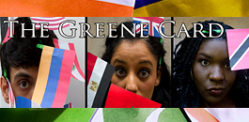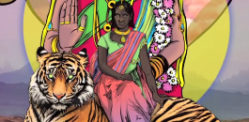"the success I have had using transgender models should encourage other designers to follow suit"
Through the seemingly controversial step of appointing two transgender models to showcase her latest sari collection, Sharmila Nair has boldly ventured where no other Desi designer has dared to delve.
Named ‘Mazhavil’ (or ‘Rainbow’), the title of the collection not only refers to the wide spectrum of colours used in her sari’s but also cleverly alludes to the symbolism of LGBT pride and diversity.
On a mission to highlight a unique characterisation of beauty and grace, the Kerala-based designer has pioneered a platform for the LGBT community and aims to continue her innovative approach to fashion through her label: Red Lotus.
DESIblitz speaks with Sharmila Nair about her latest collection, her career and the potential of South Asian fashion as a frontrunner in the international fashion scene.
Launching a campaign of this kind has broken barriers and addressed taboos. What impact do you think this will have on the LGBT community?
I look on my initiative as but a little drop. But going by the overwhelming response it has received, both from my customers as well as from the media, I feel the little drop has created some ripples on the still waters.
In time, these ripples will grow into large waves of change. I am sure this will bring about a positive change in attitudes, in public perception and eventually in the lives of the members of the LGBT community.
They will be able to come out into the open with their sexuality. And they will face a less hostile, more receptive society, which includes their own relatives.
What about the impact on the fashion industry in India? Do you think they will be more keen to hire LGBT models?
My decision to use two transgenders to model for my Mazhavil Collection, which was intended to be a dedication to the Transgender community, has met with a very favourable response.
It has also helped my two models, Maya and Gowri to emerge from their cocoon of shyness and spread their wings like butterflies, flaunting all the colours of the rainbow.
“I am sure that the liberation experienced by Maya and Gowri will be the launch pad for other members of the LGBT community to break the shackles confining them and come out boldly into the open.”
And the success I have had as a designer using transgender models should encourage other designers to follow suit.
What has been the feedback or reaction to your campaign? Has it had an impact on sales or publicity?
The response to this campaign has been extraordinary. All my customers have shown their appreciation by words and deeds.
And the way the media has publicised my little effort has been beyond my wildest dreams. And yes; all this has worked wonders for my sales as well.
Were there any apprehensions you had beforehand, if yes, how did you overcome them?
Initially, when I mooted the idea, there was a lot of scepticism. But then, my husband, my parents and my in-laws encouraged me.
Today, even those who were voicing apprehensions have come out in praise. That’s the reason why I feel I have succeeded.
Would you continue to use unconventional means to showcase your future collections?
Definitely – I have set a high benchmark. The expectations are high. I’ll reveal my future plans in due course.
What motivated you to become a fashion designer, and how easy or difficult was it to make your mark in the industry?
It all started with a visit to a handloom expo. Some of the weavers had come to it to showcase their creations and my husband and I talked to them. I purchased two sarees.
While returning home, we talked about the relatively poor turn out to the expo. We felt the weavers certainly deserve better.
Suddenly, my husband Suraj said: “Sharmila, you have always been talking about doing some online business. Why not set that idea in motion with a portal for handloom sarees?”
That’s how Red Lotus Clothing was born on Facebook. I decided to bring the weaver to focus. So we visited places in Tamilnadu and Kerala where weaving actually takes place.
We interviewed weavers, profiled their trials and tribulations, their lifestyles, their joys and their creativity. And along with these inputs, we featured the sarees woven by them. The concept worked.
Where do you get your inspirations from? What do you do when you come across obstacles in the creative process?
I am not a professionally trained designer I don’t have to go by the books.
Actually I take that as an advantage because there are no set rules to follow and you can experiment fashion in your own way.
What are the most and least favourite aspects of your job?
I love my work. And there is nothing more enjoyable than doing the work you love.
But the flip side is that it takes a lot of my time and this can be a little taxing, especially when I have a little child to take care of.
How do you stay motivated?
As I said earlier, my husband, my parents and my in-laws are my main motivators.
They have always encouraged me. As for my little son, he has been such a gem; cooperating with my odd timings, frequent absence, everything.
What advice would you give to aspiring fashion designers who are trying to break into the industry?
Think different. Be different.
How do you think fashion trends have evolved over the span of your career, specifically in South Asia, and how has his affected your creative flair?
The fashion trends have really evolved in the past few years. Every minute it is changing, so one has to be very vigilant and alert.
So, for me when I choose my stock it’s always a challenge to cater to the changing fashion trends.
How significant do you think Indian/Desi fashion has been in shaping the global fashion scene?
India is known for its variety of fabrics and style of clothes. It’s very vast… So the opportunity is huge to experiment fashion with different varieties.
So now there are a lot of international brands also coming up experimenting with Indian fabrics.
How influential do you predict Indian/Desi fashion to be in the future?
As I mentioned earlier, the scope of the fabrics here in India is huge. So the potential is really high for Desi fashion to come in a huge way in the future.
Sharmila Nair’s efforts have proved instrumental in paving the way for the social integration of the Desi LGBT community and renovating South Asian fashion trends.
However, there is still a long way to go in acknowledging equality and rights for such socially-excluded groups. DESIblitz wishes Sharmila Nair the best of luck in her future endeavours.
To find out more about Sharmila Nair’s Red Lotus label, visit her Facebook page here.




















































